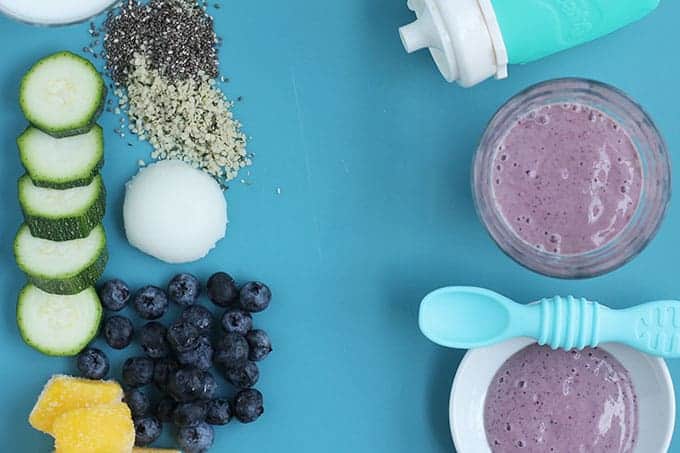Help keep those little digestive systems in good working order with this yummy Blueberry Constipation Smoothie. With natural sweetness and hydration from fruits and veggies, plus healthy fats, this is a great natural remedy for constipation…or just another smoothie for kids to add to the mix!
I know how hard it can be for little ones when they’re having a hard time going #2—often they don’t quite understand what the issue is, it can be painful, and it can be hard to know how to help them.
And while some constipation will need medical attention, particularly if it’s been going on for a while, there are dietary changes you can make to help the situation.
This Blueberry Constipation Smoothie is a great option because it’s rich in hydration, beneficial fats, and fiber, and it has a yummy flavor. You need all of those factors to really help constipation (especially hydrating produce and fats) because fiber can’t do the job alone. And you won’t often improve things if you just add fiber without additional hydration. Plus, the yummy flavor is what matters most to the kids!
TIP: Read more on natural remedies for toddler constipation, including Pear Pops, (a great constipation reliever), and find my full list of fiber-rich foods and recipes for constipated toddlers.
Your toddler won’t eat? Help is here!
Sign up for our email updates to get tips and ideas sent to your inbox.
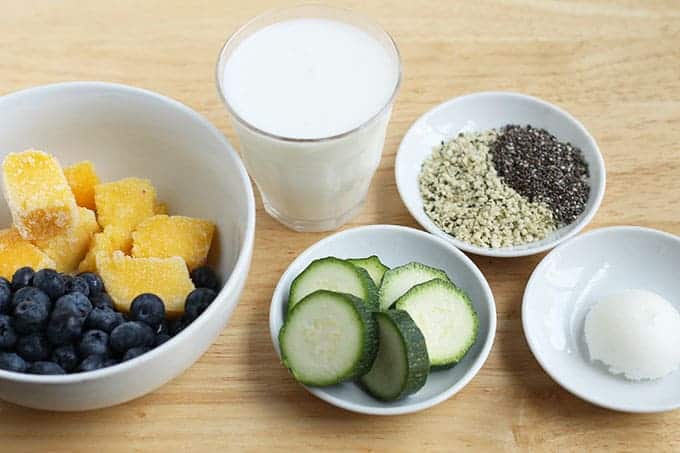
Ingredients You Need
Here’s a look at the ingredients you’ll need to have on hand so you know what to pick up from the store or pull out from the pantry, fridge, and freezer.
- Plain kefir or yogurt: I like to use kefir since it has probiotics, which may help digestive issues, but if you can’t find it or don’t have it, you can do half plain yogurt and half nondairy milk.
- Frozen blueberries: You can use wild or regular blueberries in this smoothie. The fiber is particularly helpful in the mix of a constipation smoothie.
- Frozen mango: I like to add frozen mango here since it adds a lot of creaminess and sweetness without added sugar.
- Zucchini: Adding fresh raw zucchini to the mix adds fiber and hydration and also adds a veggie that blends in seamlessly.
- Coconut oil or avocado: Adding one of these adds a dose of beneficial fats which helps food move through the digestive track. It also makes the smoothie a little more filling, which is helpful in a toddler snack.
- Hemp seeds or chia seeds: You can add either of these seeds to add fiber to this smoothie. I prefer hemp seeds since they won’t thicken the smoothie and blend in more seamlessly, but either will work.
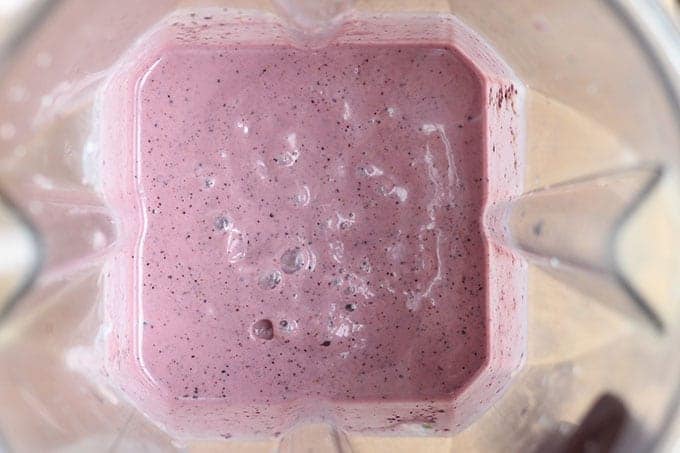
Step-by-Step Instructions
Here’s a look at how to make this Blueberry Constipation Smoothie so you know what to expect from the process.
- Add the ingredients to a blender.
- Blend very smooth, stopping to scrape down the sides of the blender as needed.
- Serve immediately either in a reusable pouch or cup.
TIP: This smoothie is best if you let the blender run for 30-60 seconds to ensure the seeds are incorporated smoothly into the mixture.
Frequently Asked Questions
No, you can make this constipation smoothie as directed without prunes. You can also try my Prune Puree if you’d like though, as another option to have in the mix.
It’s ideal to have a mix of ingredients that offer hydration, fiber, and fats, which is the motivation behind the balance in this recipe. I prefer to include a fiber rich berry like blueberry, a fiber-rich seed such as hemp seeds, and beneficial fat like coconut oil or avocado.
You can try serving them in different ways including in a reusable pouch, in an open cup, or on a spoon from a bowl. It may also help a little to let them put the ingredients into the blender on their own so they feel a little more in charge of the process. Or even choose the color of smoothie they want to make.
It depends on the specific situation, but it can be a helpful option to have in the mix during constipation bouts or to help reduce the risk of it happening.
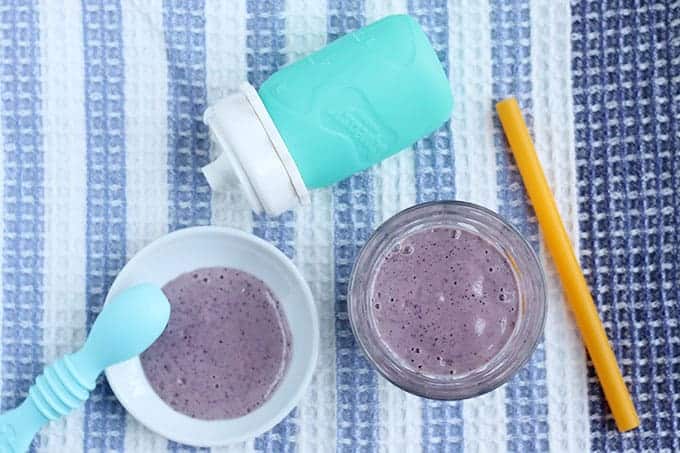
How to Serve Smoothies to Kids
Depending on the age and preference of your child, there are a few ways to serve a smoothie that they may like.
- A reusable pouch can be a great option for babies 7 months and older into toddlerhood.
- You can also serve this to a baby on a spoon. For toddlers over about 18 months, you can try a small open cup with a straw. (Kids can use open cups earlier, but I find kids often play with them so I don’t usually recommend them for smoothies.)
- You could also do a straw cup (you may need to thin the smoothie a little with water depending on the width of the straw.
TIP: If your child doesn’t care for smoothies, try serving small portions a few different ways to see if they prefer one drinking method over another.
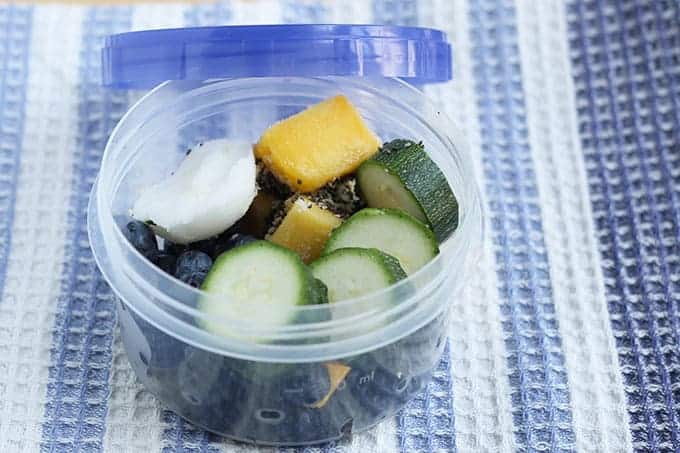
How to Prep Smoothies Ahead of Time
To prep this ahead, place all ingredients except the kefir into a zip-top freezer bag or small freezer storage container. Freeze until ready to use. Place ingredients in a blender, add the kefir, and blend.
Find more tips on how to meal prep smoothies, too.
Best Tips for Success
- If you can’t find or don’t have kefir, try half yogurt and half nondairy milk.
- Trade in 1 small fresh orange instead of the blueberries for an option.
- Use almond butter instead of or in addition to the coconut oil.
- Read more about toddler constipation to learn what other steps you can take to help.
- Run the blender for 30-60 seconds to ensure the seeds and coconut oil are well blended into the smoothie.
I’d love to hear what you think of this recipe if you try it, so please comment below to share!
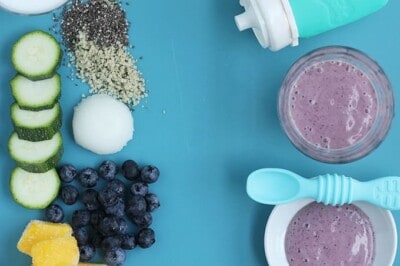
Prevent your screen from going dark
- If you can’t find or don’t have kefir, try half yogurt and half nondairy milk.
- Trade in 1 small fresh orange instead of the blueberries for an option.
- Use almond butter instead of or in addition to the coconut oil.
- To prep this ahead, place all ingredients except the kefir into a zip-top freezer bag or small freezer storage container. Freeze until ready to use. Place ingredients in a blender, add the kefir, and blend.
Calories: 230kcal, Carbohydrates: 19g, Protein: 8g, Fat: 15g, Saturated Fat: 9g, Polyunsaturated Fat: 3g, Monounsaturated Fat: 1g, Cholesterol: 15mg, Sodium: 66mg, Potassium: 179mg, Fiber: 2g, Sugar: 16g, Vitamin A: 813IU, Vitamin C: 24mg, Calcium: 172mg, Iron: 1mg
This post was first published February 2020.


